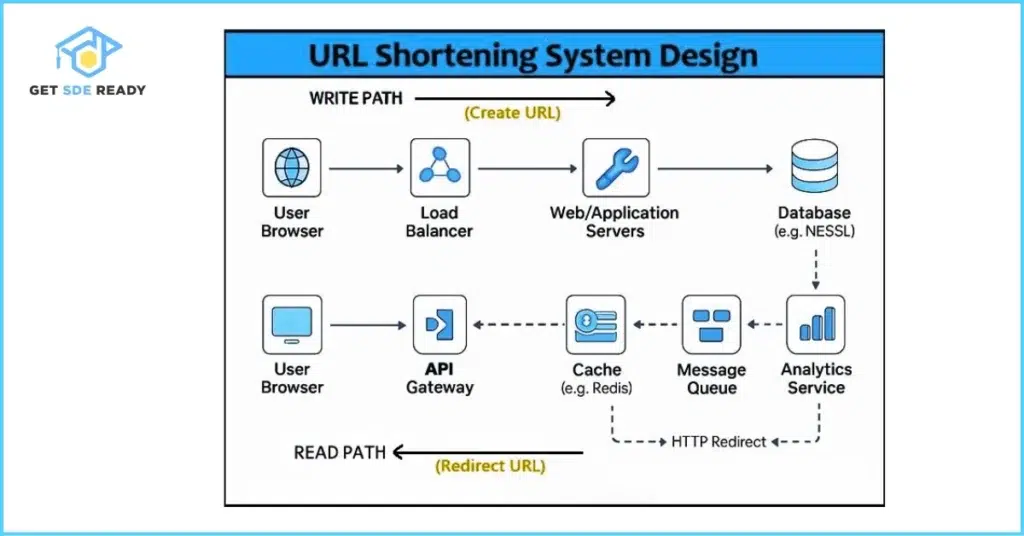Data Structures and Algorithms
- Introduction to Data Structures and Algorithms
- Time and Space Complexity Analysis
- Big-O, Big-Theta, and Big-Omega Notations
- Recursion and Backtracking
- Divide and Conquer Algorithm
- Dynamic Programming: Memoization vs. Tabulation
- Greedy Algorithms and Their Use Cases
- Understanding Arrays: Types and Operations
- Linear Search vs. Binary Search
- Sorting Algorithms: Bubble, Insertion, Selection, and Merge Sort
- QuickSort: Explanation and Implementation
- Heap Sort and Its Applications
- Counting Sort, Radix Sort, and Bucket Sort
- Hashing Techniques: Hash Tables and Collisions
- Open Addressing vs. Separate Chaining in Hashing
- DSA Questions for Beginners
- Advanced DSA Questions for Competitive Programming
- Top 10 DSA Questions to Crack Your Next Coding Test
- Top 50 DSA Questions Every Programmer Should Practice
- Top Atlassian DSA Interview Questions
- Top Amazon DSA Interview Questions
- Top Microsoft DSA Interview Questions
- Top Meta (Facebook) DSA Interview Questions
- Netflix DSA Interview Questions and Preparation Guide
- Top 20 DSA Interview Questions You Need to Know
- Top Uber DSA Interview Questions and Solutions
- Google DSA Interview Questions and How to Prepare
- Airbnb DSA Interview Questions and How to Solve Them
- Mobile App DSA Interview Questions and Solutions
DSA Interview Questions
- DSA Questions for Beginners
- Advanced DSA Questions for Competitive Programming
- Top 10 DSA Questions to Crack Your Next Coding Test
- Top 50 DSA Questions Every Programmer Should Practice
- Top Atlassian DSA Interview Questions
- Top Amazon DSA Interview Questions
- Top Microsoft DSA Interview Questions
- Top Meta (Facebook) DSA Interview Questions
- Netflix DSA Interview Questions and Preparation Guide
- Top 20 DSA Interview Questions You Need to Know
- Top Uber DSA Interview Questions and Solutions
- Google DSA Interview Questions and How to Prepare
- Airbnb DSA Interview Questions and How to Solve Them
- Mobile App DSA Interview Questions and Solutions
Data Structures and Algorithms
- Introduction to Data Structures and Algorithms
- Time and Space Complexity Analysis
- Big-O, Big-Theta, and Big-Omega Notations
- Recursion and Backtracking
- Divide and Conquer Algorithm
- Dynamic Programming: Memoization vs. Tabulation
- Greedy Algorithms and Their Use Cases
- Understanding Arrays: Types and Operations
- Linear Search vs. Binary Search
- Sorting Algorithms: Bubble, Insertion, Selection, and Merge Sort
- QuickSort: Explanation and Implementation
- Heap Sort and Its Applications
- Counting Sort, Radix Sort, and Bucket Sort
- Hashing Techniques: Hash Tables and Collisions
- Open Addressing vs. Separate Chaining in Hashing
- DSA Questions for Beginners
- Advanced DSA Questions for Competitive Programming
- Top 10 DSA Questions to Crack Your Next Coding Test
- Top 50 DSA Questions Every Programmer Should Practice
- Top Atlassian DSA Interview Questions
- Top Amazon DSA Interview Questions
- Top Microsoft DSA Interview Questions
- Top Meta (Facebook) DSA Interview Questions
- Netflix DSA Interview Questions and Preparation Guide
- Top 20 DSA Interview Questions You Need to Know
- Top Uber DSA Interview Questions and Solutions
- Google DSA Interview Questions and How to Prepare
- Airbnb DSA Interview Questions and How to Solve Them
- Mobile App DSA Interview Questions and Solutions
DSA Interview Questions
- DSA Questions for Beginners
- Advanced DSA Questions for Competitive Programming
- Top 10 DSA Questions to Crack Your Next Coding Test
- Top 50 DSA Questions Every Programmer Should Practice
- Top Atlassian DSA Interview Questions
- Top Amazon DSA Interview Questions
- Top Microsoft DSA Interview Questions
- Top Meta (Facebook) DSA Interview Questions
- Netflix DSA Interview Questions and Preparation Guide
- Top 20 DSA Interview Questions You Need to Know
- Top Uber DSA Interview Questions and Solutions
- Google DSA Interview Questions and How to Prepare
- Airbnb DSA Interview Questions and How to Solve Them
- Mobile App DSA Interview Questions and Solutions
How to Design a URL Shortener Like Bitly or TinyURL
Have you ever wondered how services like Bitly or TinyURL turn those endlessly long web addresses into neat, shareable snippets? Whether you’re building a personal project, preparing for a tech interview, or just curious about the magic behind the scenes, designing a URL shortener is a fascinating dive into system architecture. It’s a blend of creativity, efficiency, and scalability that can handle billions of links without breaking a sweat. If you’re eager to level up your skills in this area, sign up for our free course updates and resources to get hands-on guidance straight to your inbox.
In this post, we’ll walk through the entire process step by step, from understanding the basics to tackling advanced challenges. We’ll draw on real-world insights from established services, backed by data and expert perspectives, to give you a blueprint you can actually use. By the end, you’ll have the knowledge to design your own robust URL shortener—and maybe even impress in your next interview.
Understanding URL Shorteners
Let’s start with the fundamentals. URL shorteners aren’t just about making links pretty; they’re essential tools in our digital world.
What Are URL Shorteners?
At their core, URL shorteners take a long, cumbersome URL—like https://www.example.com/very/long/path/with/parameters—and convert it into something concise, such as https://bit.ly/abc123. When someone clicks the short link, the service redirects them to the original destination. This redirection typically uses HTTP status codes like 301 (permanent) or 302 (temporary), ensuring a seamless experience.
These services often go beyond basic shortening. They track clicks, provide analytics, and even allow customization. For instance, Bitly processes over 10 billion clicks per month, according to their recent reports, highlighting the massive scale involved.
Why Use URL Shorteners?
Long URLs can be a nightmare for sharing on social media, emails, or print materials. They exceed character limits (think Twitter’s old 140-character cap), look messy, and are prone to typos. Shorteners solve this by:
- Improving Shareability: Easier to copy, paste, and remember.
- Enhancing Analytics: Track engagement metrics like click counts, locations, and devices.
- Boosting Branding: Custom domains (e.g., yourbrand.ly) build trust and recognition.
- Saving Space: Crucial for SMS marketing or QR codes.
Statistics show their impact: A 2024 study by Rebrandly found that branded short links see 34% higher click-through rates than generic ones. Plus, with the rise of social media, shorteners like TinyURL, which has been around since 2002 and claims over 90% market share in some segments per 6sense data, have become indispensable.
Popular Examples: Bitly and TinyURL
Bitly, founded in 2008, powers enterprise-level shortening with advanced features like link retargeting and deep analytics. It’s used by brands like Disney and McDonald’s, handling billions of redirects annually. TinyURL, on the other hand, focuses on simplicity—free, no-signup shortening that’s perfect for casual users. Both services emphasize reliability: Bitly boasts 99.9% uptime, while TinyURL’s straightforward approach has kept it relevant for over two decades.
If you’re diving into web development to build similar tools, exploring structured courses can help. For foundational skills, consider our web development course to get started on backend setups.

Key Requirements for Your URL Shortener
Before coding, nail down what your system needs. This is where good design begins—by aligning with user expectations and real-world demands.
Functional Requirements
These define what the system must do:
- Shorten URLs: Generate unique short aliases for long URLs.
- Redirect: Seamlessly forward users from short to long URLs.
- Custom Aliases: Allow users to create personalized short links (e.g., bit.ly/my-promo).
- Expiration: Optional timeouts for links, useful for temporary campaigns.
- Analytics: Track clicks, geographies, and referrers.
- API Support: RESTful endpoints for integration, like POST /shorten and GET /{alias}.
Expert insight: As Sandeep Verma notes in his Medium article on scalable designs, “Supporting custom URLs up to 16 characters adds flexibility but requires separate handling to avoid conflicts.”
Non-Functional Requirements
These ensure the system performs well under pressure:
- Scalability: Handle 100 million+ shortenings monthly, scaling to billions.
- Availability: 99.99% uptime—downtime could break countless links.
- Low Latency: Redirections under 200ms to keep users happy.
- Security: Prevent abuse like phishing or spam.
- Durability: Store data reliably for years.
Capacity estimates are crucial here. For 100 million URLs/month, you’d need about 60TB of storage over a century, per Verma’s calculations. Tools like NoSQL databases shine for this, as we’ll discuss later.
For those tackling data-heavy systems, our data science course covers analytics pipelines that could enhance your shortener’s tracking features.
System Architecture Overview
Think of your URL shortener as a well-oiled machine with interconnected parts. We’ll break it down from high-level to nitty-gritty.
High-Level Design
At a bird’s-eye view, the system includes:
- Clients: Browsers or apps sending requests.
- Load Balancer: Distributes traffic to prevent overload.
- Application Servers: Handle shortening logic and redirects.
- Database: Stores URL mappings.
- Cache: Speeds up frequent lookups.
- Analytics Service: Processes click data asynchronously.
A typical flow: User submits a long URL → System generates short key → Stores mapping → Returns short URL. For redirects: Fetch original from DB/cache → 302 redirect.

Core Components
- API Gateway: Manages requests, authentication, and rate limiting.
- Key Generation Service (KGS): Pre-generates unique keys to avoid runtime collisions.
- Message Queue: Like Kafka, for handling analytics without slowing redirects.
- Cleanup Service: Periodically removes expired links.
This setup, inspired by Design Gurus’ guide, ensures modularity. For mastering such architectures, our master DSA, web dev, and system design course provides in-depth modules.
Generating Short URLs
The heart of the system: How do you create those tiny aliases without duplicates?
Encoding Techniques
Several methods exist, each with trade-offs:
- Base62 Encoding:
- Uses 62 characters (0-9, a-z, A-Z) for compact keys.
- Example: Convert a counter (e.g., 12345) to “3D7” in Base62.
- Pros: Predictable, scalable (7 chars = 3.5 trillion possibilities).
- Cons: Needs collision checks.
- Hash-Based (MD5 or SHA-256):
- Hash the long URL, take first 7-8 chars.
- Pros: Deduplicates identical URLs.
- Cons: Collision risk—resolve by appending sequences.
- Counter-Based:
- Increment a global counter, encode in Base62.
- Use Zookeeper for distributed coordination.
GeeksforGeeks recommends Base62 for its balance, noting it could handle 1000 URLs/sec for 110 years before exhaustion.
Handling Collisions and Uniqueness
- Check DB before storing.
- For high scale, use KGS to pre-generate keys offline.
- ByteByteGo suggests caching keys in memory for speed.
If collisions worry you, dive into algorithms with our DSA course.
Database Design and Storage
Storage is where scalability lives or dies.
Choosing the Right Database
- NoSQL (Preferred): Cassandra or MongoDB for horizontal scaling and high writes.
- Why Not SQL?: Sharding is complex; NoSQL handles eventual consistency fine for redirects.
- Schema: Key (short alias), Value (long URL), Expiration, UserID, Clicks.
Design Gurus estimates 15TB for 5 years at 500M/month—plan accordingly.
Sharding and Replication
- Hash-based sharding on short keys.
- Replicate for fault tolerance.
Scaling the System
Growth is inevitable—design for it.
Caching for Performance
- Redis/Memcached with LRU eviction.
- Cache 20% of hot data (80/20 rule)—~70GB suffices.
- On miss: Fetch from DB, update cache.
Load Balancing Strategies
- Round Robin or least connections.
- Multi-layer: Clients to servers, servers to DB.
Partitioning and Sharding
- Consistent hashing minimizes reshuffling.
- Add nodes as traffic spikes.
For quick prototypes, our crash course can get you building fast.

Security and Best Practices
Don’t let your shortener become a hacker’s playground.
Authentication and Rate Limiting
- API keys for users.
- Limit requests per IP/key to prevent DDoS.
- Scan for malicious URLs.
Common Pitfalls to Avoid
- Random Slugs: Always customize for readability (Short.io warns against this).
- Dependency Risks: Own your domain to avoid third-party failures.
- SEO Impact: Use 301 redirects for link juice.
- Privacy Issues: Anonymize analytics data.
Expert quote: “URL shorteners can threaten user privacy if not handled carefully,” per UK government communications guidelines.
Analytics and Monitoring
Turn data into insights.
- Track via 302 redirects.
- Use Kafka for async processing.
- Metrics: Clicks, geolocation, devices.
Bitly’s dashboard exemplifies this, showing trends that drive business decisions.
Common Interview Questions on URL Shortener Design
Since this is a staple system design interview question at companies like Google and Amazon, here are 30 real questions often asked, with in-depth answers based on actual experiences from LeetCode, GeeksforGeeks, and interview prep sites. These draw from FAANG-style sessions where candidates must think aloud.
- What are the core functional requirements for a URL shortener? Answer: Generate unique short aliases, redirect to originals, support customs/expirations, and provide analytics. Focus on uniqueness to avoid conflicts.
- How would you handle non-functional requirements like scalability? Answer: Use sharded NoSQL, caching, and load balancers. Estimate: 200 writes/sec scales with horizontal additions.
- Explain Base62 encoding for short keys. Answer: Maps numbers to 62 chars. Code: Divide by 62, append remainders. 7 chars handle trillions.
- How do you resolve hash collisions in MD5-based shortening? Answer: Append a sequence or retry with salt. Check DB atomically.
- Why choose NoSQL over SQL for the database? Answer: Better for key-value, scales easily. SQL for ACID if needed, but rare here.
- Describe the role of caching. Answer: Redis for hot keys, LRU eviction. Reduces DB hits by 80%.
- How to implement load balancing? Answer: Round Robin at multiple layers. Intelligent for load-aware routing.
- What’s a Key Generation Service (KGS)? Answer: Pre-generates keys offline, stores in DB. Prevents runtime duplicates.
- How to handle URL expiration? Answer: Lazy deletion on access; periodic cleanup job.
- Design the API endpoints. Answer: POST /shorten {url}, returns short. GET /{alias} redirects.
- Calculate storage needs for 100M URLs/month. Answer: ~500 bytes/entry → 50GB/month, 3TB/5 years.
- How to track analytics without slowing redirects? Answer: Async via Kafka; store in separate DB.
- What HTTP code for redirects? Why 302 over 301? Answer: 302 for temporary, allows click tracking each time.
- Prevent abuse like spam links. Answer: Rate limits, blacklists, CAPTCHA for high-volume users.
- Handle custom aliases. Answer: Separate DB check; limit length to 16 chars.
- What if the KGS fails? Answer: Standby replica; sync via Zookeeper.
- Pros/cons of counter vs. hash encoding. Answer: Counter guarantees uniqueness but needs coordination; hash is simple but collides.
- Implement data partitioning. Answer: Hash short key for shards; consistent hashing for rebalancing.
- Cache eviction policy? Answer: LRU for recency; size based on 80/20 rule.
- How to make keys non-predictable? Answer: Random generation or hash salting.
- Support for private URLs? Answer: Add permission table; check user ID on redirect.
- Estimate memory for caching. Answer: 170GB for 20% of daily traffic at 500M/month.
- Handle high read/write ratios. Answer: Cache reads; shard writes.
- What about link reuse after expiration? Answer: Return to key pool after cleanup.
- Database schema details. Answer: ShortKey (PK), LongURL, Expiration, Clicks, UserID.
- How many characters for short URLs? Answer: 7 in Base62 = 3.5T possibilities; adjust for needs.
- Integrate security like API keys. Answer: Authenticate requests; quota per key.
- Follow-up: Distributed counter with Zookeeper. Answer: Zookeeper assigns ranges; servers increment locally.
- Replication strategy. Answer: Master-slave; eventual consistency OK.
- Edge case: Same URL shortened multiple times. Answer: Deduplicate with hashing; return same short.
These questions test depth—practice explaining trade-offs.
Conclusion
Designing a URL shortener like Bitly or TinyURL is more than code; it’s about building reliable, scalable systems that solve real problems. From encoding tricks to security safeguards, you’ve now got a solid foundation. Ready to build your own? Start small, test rigorously, and scale up. If this sparked your interest, explore our courses for more hands-on learning. What’s your next project—share in the comments!
FAQs
What is a URL shortener and how does it work?
A URL shortener creates compact links from long ones, using encoding like Base62 and database mappings for redirection.
How to create a scalable URL shortener system?
Focus on NoSQL databases, caching with Redis, and load balancing for handling high traffic in URL shortening services.
What are common encoding methods for short URLs
Base62, MD5 hashing, and counter-based approaches are popular for generating unique aliases in link shorteners.
Why use analytics in URL shorteners like Bitly
Analytics track clicks, locations, and engagement, helping optimize marketing with tools like TinyURL or Bitly.

DSA, High & Low Level System Designs
- 85+ Live Classes & Recordings
- 24*7 Live Doubt Support
- 400+ DSA Practice Questions
- Comprehensive Notes
- HackerRank Tests & Quizzes
- Topic-wise Quizzes
- Case Studies
- Access to Global Peer Community
Buy for 52% OFF
₹25,000.00 ₹11,999.00
Accelerate your Path to a Product based Career
Boost your career or get hired at top product-based companies by joining our expertly crafted courses. Gain practical skills and real-world knowledge to help you succeed.

SDE 360: Master DSA, System Design, AI & Behavioural
- 100+ Live Classes & Recordings
- 24*7 Live Doubt Support
- 400+ DSA Practice Questions
- Comprehensive Notes
- HackerRank Tests & Quizzes
- Topic-wise Quizzes
- Case Studies
- Access to Global Peer Community
Buy for 50% OFF
₹39,999.00 ₹19,999.00

DSA, High & Low Level System Designs
- 85+ Live Classes & Recordings
- 24*7 Live Doubt Support
- 400+ DSA Practice Questions
- Comprehensive Notes
- HackerRank Tests & Quizzes
- Topic-wise Quizzes
- Case Studies
- Access to Global Peer Community
Buy for 52% OFF
₹25,000.00 ₹11,999.00

Fast-Track to Full Spectrum Software Engineering
- 120+ Live Classes & Recordings
- 24*7 Live Doubt Support
- 400+ DSA Practice Questions
- Comprehensive Notes
- HackerRank Tests & Quizzes
- 12+ live Projects & Deployments
- Case Studies
- Access to Global Peer Community
Buy for 51% OFF
₹35,000.00 ₹16,999.00

Low & High Level System Design
- 20+ Live Classes & Recordings
- 24*7 Live Doubt Support
- Case Studies
- Comprehensive Notes
- HackerRank Tests
- Topic-wise Quizzes
- Access to Global Peer Community
- Interview Prep Material
Buy for 60% OFF
₹20,000.00 ₹7,999.00

Mastering Mern Stack (WEB DEVELOPMENT)
- 65+ Live Classes & Recordings
- 24*7 Live Doubt Support
- 12+ Hands-on Live Projects & Deployments
- Comprehensive Notes & Quizzes
- Real-world Tools & Technologies
- Access to Global Peer Community
- Interview Prep Material
- Placement Assistance
Buy for 53% OFF
₹15,000.00 ₹6,999.00
Reach Out Now
If you have any queries, please fill out this form. We will surely reach out to you.
Contact Email
Reach us at the following email address.
arun@getsdeready.com
Phone Number
You can reach us by phone as well.
+91-97737 28034
Our Location
Rohini, Sector-3, Delhi-110085
